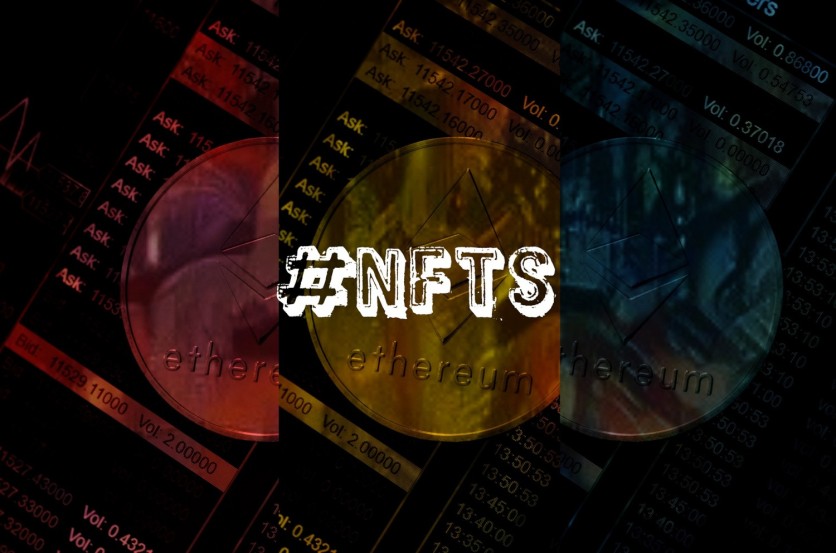
You mightn't think a bear market is a good time to be involved in NFTs, but then a collection of tokenized feet pics drops and sends trade volumes into the stratosphere. Degens gonna degen, right?
Feetpix.wtf aside, the market has had to contend with a number of familiar problems of late, including exploits, plagiarized works, and spam. And that's without getting onto NFTs' long-standing flaw: a fundamental lack of real-world utility.
NFTs shot to prominence two years ago, with investors and speculators eager to get their hands on the latest digital collectibles and creatives only too happy to tokenize their talents. But are the same old issues destined to hamper the growth of the market, confining such tokens to niche status and denting their mainstream appeal? Or is it a matter of time before non-fungible collectibles are widely and variously used, with meaningful applications IRL?
New Year, New Fake NFTs
NFTs as originally envisioned might be unique, indivisible, and non-interchangeable, but as we have repeatedly seen, this vision doesn't always match the reality. One of the biggest problems is that NFTs can be easily exploited: since anyone can mint their own token, scammers often exploit marketplaces to offload completely worthless works.
Early in the New Year, a flaw in popular NFT marketplace Magic Eden allowed phoney NFTs to be added to coveted collections like Y00ts and ABC. A real-world equivalent would be Christie's auction house including a bunch of forgeries in a collection of Claude Monet paintings. Luckily for duped buyers, Magic Eden quickly refunded affected users - but some will wonder why these sorts of bugs continue to rear their heads.
The Magic Eden story comes a year after rival marketplace OpenSea admitted that over 80% of NFTs created using its minting tool were fake. Paying good money for an NFT, only to later learn that it's a fugazi, will be enough to send many buyers scampering back to the web2 world decrying web3 as a villainous milieu populated by blaggers and crooks. Particularly if they had believed they were buying something special.
In 2021, a British collector purchased a fake Banksy NFT that had been advertised on the artist's official website. As with Magic Eden, the story had a happy ending after the benevolent hacker returned the money - a princely sum of $336,000.
Needless to say, buyers should always conduct due diligence before making an NFT purchase, but bad actors will continue to exploit the technology where possible. Which is why marketplaces themselves must weed them out and put better safety measures in place - caveat emptor isn't enough. In the real world, if you want a high-end wristwatch, you visit an official retailer because you trust that they stock the real thing: spotting a fake is damn difficult for the consumer.
In the face of this enduring problem, authentication solutions have started to emerge. Wakweli is one of them: it's a protocol of certification that leverages a Proof of Democracy (PoD) consensus algorithm to corroborate the legitimacy of any tokenized asset. In short, Wakweli can be used to verify that the NFT you're buying is 100% genuine.
Incubated by Swiss software firm EverdreamSoft, the venture has baked strong incentives into its protocol to compel community members to participate in the authentication process. Wakweli seeks to become "the reference of trust of the decentralized ecosystem to preserve the tokenized assets market integrity and drive its liquidity."
Music to the ears of anyone taken in by a fake collection, though it offers little succour to those who never obtained a refund after they were duped.
Other Unresolved Issues in the NFT Market
Exploits are only part of the problem: most NFTs still lack utility; you can use them for speculation and collecting purposes, but what else? At the moment, not much. This lack of usefulness means their value is largely tied to hype and trade volumes and could drop sharply if the overall market dries up.
Then there are the continual hacks, whereupon you don't even have to buy a counterfeit NFT to lose out. And this affects major players as well as the ordinary Joes. In recent weeks, leading NFT collector CryptoNovo and RTFKT COO Nikhil Gopalani saw their wallets compromised, leading to the loss of dozens of high-value tokens. In the case of Gopalani, a "clever phisher" hightailed it with a haul that included 19 CloneX NFTs, 18 RTFKT Space Pods, 17 Loot Pods, 11 CryptoKicks, and 19 RTFKT Animus Eggs. Ouch.
If a fraudster drains your bank account, there's a good chance you'll get the money back. If they drain your web3 wallet, there's next to no prospect of recompense. That's the beauty and the curse of the blockchain.
Whether it's the circulation of fraudulent NFTs, sophisticated phishing scams, or a lack of underlying utility, hidebound problems still undermine the trustworthiness of the entire system. Ultimately, these issues must be addressed before the industry can move to the next level.
On a more positive note, the NFT market appears to have enduring appeal. Despite last year's crash, sales in 2022 nearly matched the 2021 boom. We've seen recent collections from Game of Thrones and, er, Donald Trump, and Tennis Australia is launching a new collection ahead of this year's Australian Open. If better use-cases emerge, and authentication tools gain prominence, a healthier and more sustainable market will surely emerge.
ⓒ 2025 TECHTIMES.com All rights reserved. Do not reproduce without permission.




